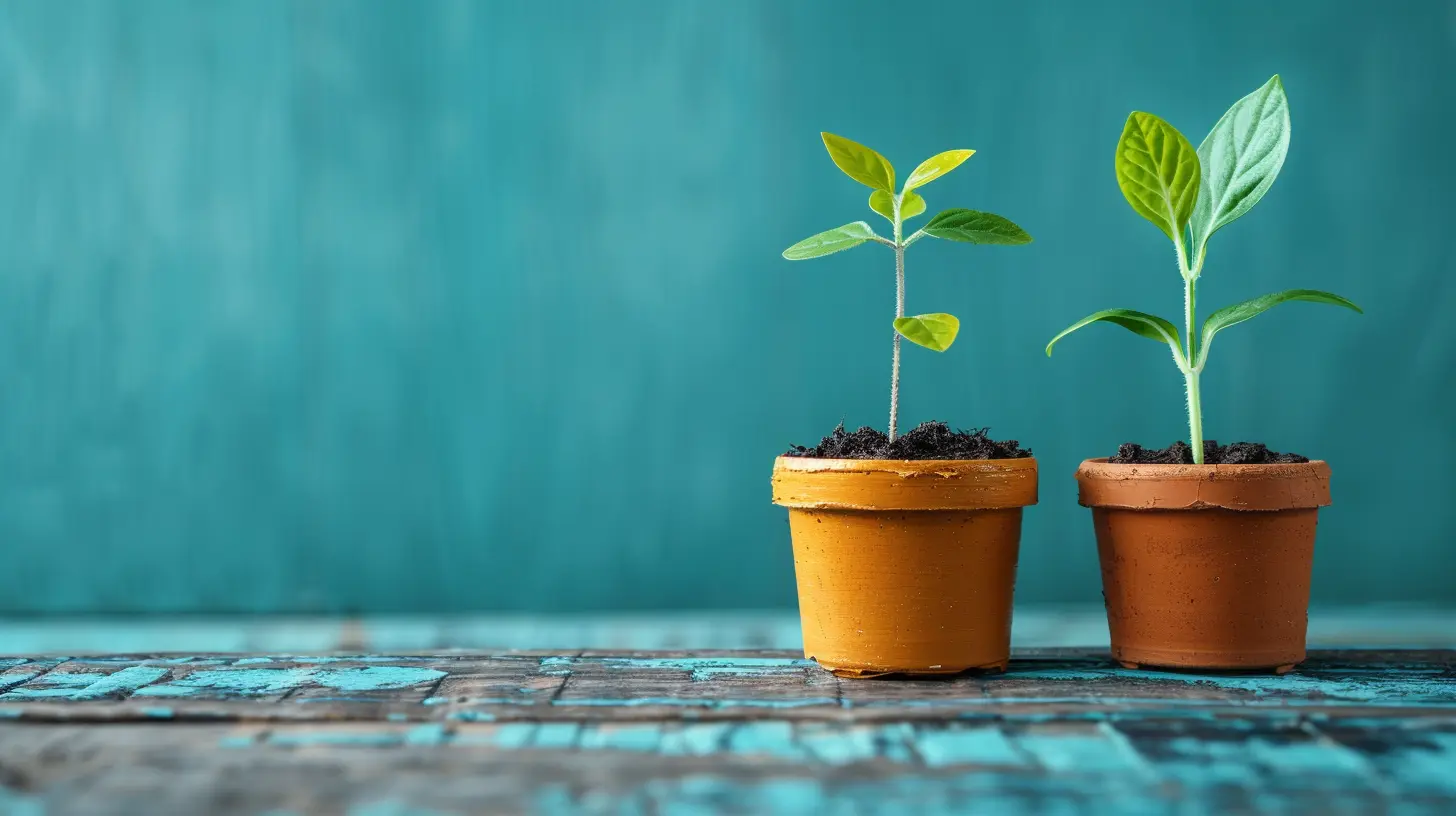Shifting from Fixed to Growth: A Guide to Personal Transformation
12 October 2025
Have you ever felt stuck in a rut, believing that your abilities are carved in stone? If so, you're not alone. Many people operate under a fixed mindset, assuming their intelligence, talents, and potential are predetermined. But science—and life—tell a different story.
The alternative? A growth mindset—a way of thinking that embraces challenges, sees failures as stepping stones, and thrives on effort. Shifting from a fixed to a growth mindset isn’t just about positive thinking; it’s about transforming the way you approach learning, success, and life itself.
So, how do you make this shift? Let’s dive deep into the psychology behind it and explore practical ways to foster a growth-oriented attitude. 
Understanding Fixed vs. Growth Mindset
Before we talk about the transformation, let’s break down these two mindsets.What Is a Fixed Mindset?
A fixed mindset is the belief that abilities, intelligence, and talents are static traits—you either have them or you don’t. People with this mentality avoid challenges to protect their self-image, fear failure, and see effort as pointless if they aren't naturally skilled at something.Common signs of a fixed mindset:
- Avoiding tasks that seem difficult
- Feeling threatened by others’ success
- Giving up easily when faced with obstacles
- Believing that talent alone leads to success
What Is a Growth Mindset?
A growth mindset, on the other hand, is the belief that intelligence and abilities can be developed through dedication and effort. In this way of thinking, setbacks aren't failures but opportunities to learn and improve.Common traits of a growth mindset:
- Embracing challenges instead of avoiding them
- Viewing criticism as constructive feedback
- Understanding that effort leads to mastery
- Finding inspiration in others’ success
Dr. Carol Dweck, the pioneer of mindset research, emphasizes that adopting a growth mindset can open doors to resilience, lifelong learning, and personal achievement. But how do you shift from fixed to growth? Let’s break it down. 
How to Shift from a Fixed to a Growth Mindset
Moving from a fixed to a growth mindset isn’t an overnight transformation. It requires continuous effort, self-awareness, and intentional change. Below are actionable steps to help you on this journey.1. Recognize Your Internal Dialogue
Your mindset starts with your thoughts. Pay attention to that little voice in your head—what does it say when you face challenges?- Fixed mindset: "I’m just not good at this."
- Growth mindset: "I’m not good at this yet, but I can improve with practice."
Start replacing negative self-talk with growth-oriented affirmations. Words are powerful, and the way you talk to yourself shapes your actions.
2. Reframe Failure as Learning
Most people fear failure because they see it as proof of inadequacy. Instead, think of failure as feedback. Every "mistake" is an opportunity to grow, adapt, and refine your skills.Ask yourself:
- What can I learn from this experience?
- How can I use this setback to improve?
Even the most successful individuals—think of Albert Einstein, Michael Jordan, or Oprah Winfrey—failed countless times before reaching greatness. Their key to success? They viewed every failure as a stepping stone.
3. Embrace Effort and Persistence
Hard work beats talent when talent doesn’t work hard. If you believe that effort is pointless, shifting your mindset will require a fundamental change in perspective. Instead of seeing struggle as a sign of weakness, recognize it as a part of the growth process.- Keep pushing forward even when progress feels slow.
- Understand that skill-building takes time and repetition.
- Celebrate small wins to stay motivated.
Persistence is what separates those who succeed from those who don’t. The road to expertise is paved with effort, not just natural ability.
4. Surround Yourself with Growth-Minded Individuals
Have you ever noticed that successful people tend to have supportive, ambitious networks? That’s because your environment plays a significant role in shaping your mindset.- Engage with mentors, coaches, or peers who challenge you.
- Avoid toxic relationships that reinforce self-doubt.
- Join communities that promote learning and development.
By surrounding yourself with people who believe in growth and endless possibilities, you’ll naturally start adopting the same mindset.
5. Replace "I Can’t" with "How Can I?"
Words have immense power. The way you phrase your thoughts affects your brain’s ability to problem-solve. Instead of shutting down challenges with "I can't do this," ask yourself, "How can I solve this problem?"This small shift in language opens up your brain to creativity and problem-solving, rather than pushing you into defeat mode.
6. Develop a Love for Learning
Growth-minded individuals don’t limit themselves to what they already know. They dive into new topics, challenge old beliefs, and constantly seek improvement.- Read books, listen to podcasts, attend workshops.
- Experiment with new skills, even outside your comfort zone.
- Stay curious—ask "why" and "how" often.
When you adopt a lifelong learning mentality, you no longer see limitations—you see possibilities everywhere.
7. Cultivate Self-Compassion
Changing your mindset doesn’t mean you’ll never slip into old habits. The trick is to be kind to yourself when setbacks happen.- Don’t label yourself as a failure.
- Acknowledge your progress, even if it’s small.
- Be patient—growth takes time.
Think of personal transformation like a fitness journey. No one builds muscle overnight. It’s the consistent small actions, day after day, that create lasting change. 
Why Making This Shift Matters
Improved Resilience
When you see challenges as opportunities, setbacks won’t derail you. Instead, you’ll bounce back stronger.Better Relationships
A growth mindset helps you foster healthier relationships by encouraging open communication and conflict resolution.Greater Career Success
Professionals with a growth mindset are more adaptable, learn faster, and innovate more effectively—making them valuable in any field.Increased Happiness and Fulfillment
When you embrace growth, you reduce stress, eliminate limiting beliefs, and unlock your full potential.Wouldn’t life be much more exciting if you saw every challenge as an adventure rather than an obstacle? 
Final Thoughts
Shifting from a fixed mindset to a growth mindset is one of the most powerful personal transformations you can undergo. It rewires the way you approach difficulties, learn from mistakes, and strive for continuous self-improvement.Your abilities are not set in stone. Your potential is limitless. The only thing standing between you and a more fulfilling life is your perspective.
So, next time you catch yourself thinking, "I can’t do this," pause and ask yourself instead: "What can I learn from this?" That simple change in mindset might just change your life.
all images in this post were generated using AI tools
Category:
Growth MindsetAuthor:

Monica O`Neal
Discussion
rate this article
1 comments
Virginia McGill
What an inspiring read! This guide beautifully highlights the power of embracing a growth mindset. It's refreshing to see practical tips for personal transformation—it really encourages readers to step out of their comfort zones. Excited to implement these ideas in my own journey! 🌱
October 19, 2025 at 2:15 AM

Monica O`Neal
Thank you for your kind words! I'm thrilled to hear that you found the guide inspiring and that you're excited to implement these ideas. Here's to your transformative journey! 🌱


